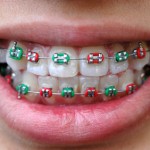
Long -term retention is necessary to avoid relapse following the completion of orthodontic treatment. The lingual retainer can be a useful method of retention. The aim of this study was to investigate the effect of liquid resin on the survival of fixed lingual retainers and to evaluate the incidence of calculus accumulation and discoloration adjacent to the lingual retainers.
What did they do
Fifty-two patients (26 males, 26 females) were randomized into one of two groups The resin group had lingual retainers bonded to the enamel surfaces with two-step bonding technique Those in the non-resin group Over a 2-year observation period, Retainer failure, calculus accumulation, and discoloration of composite pads adjacent to the retainers were recorded.
What did they find
- There was a statistically significant difference in the failure rate between the two groups retainer failure was 4% in the resin group and 27% non-resin group (P = .049).
- The incidence of calculus accumulation (31%) and discoloration (69%) adjacent to the composite pads was significantly higher in the non-resin group.
They concluded
Application of resin in bonding of lingual retainers appears to reduce the incidence of retainer failure as well as the incidence of calculus accumulation and discoloration adjacent to the composite pads
Bazargani F, Jacobson S, Lennartsson B. A comparative evaluation of lingual retainer failure bonded with or without liquid resin. Angle Orthod. 2012 Jan;82(1):84-7. Epub 2011 Jul 1. PubMed PMID: 21721947.
